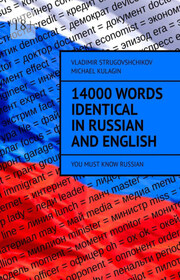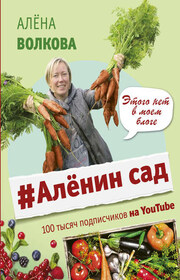Русский язык для сотрудничества России и Африки (2-е изд.). Учебник полезен для африканских и русских студентов Елена Тинякова
© Елена Александровна Тинякова, 2025
ISBN 978-5-0065-4120-7
Создано в интеллектуальной издательской системе Ridero
Международный проект «Глобальная культура-Русский язык для международной коммуникации»
ЗАО «Гуманитарный фонд»
Группа социально-экономического проектирования Санкт-Петербургского союза учёных
НП «Содействие субъектам науки, просвещения, образования»
сектор Народного художественного университета Санкт-Петербурга
Е. А. Тинякова
РУССКИЙ ЯЗЫК ДЛЯ СОТРУДНИЧЕСТВА РОССИИ И АФРИКИ
Учебник
для говорящих на английском языке в Африке
с культурологическим приложением. 2-е изд.. изм. и доп.
Санкт-Петербург
2025
Учебник рекомендован Группой социально-экономического
проектирования Санкт-Петербургского Союза учёных
Учебник «Русский язык для сотрудничества России и Африки»: учебник для говорящих на английском языке в Африке» является частью Международного проекта «Русский как язык международного общения». Проект задуман автором для расширения включения русского языка в международное общение. Прекрасные образцы русской культуры уже давно завоевали глобальный масштаб в межкультурной коммуникации. Русский язык имеет трудно приводимые в закономерность ситуации в фонетике, грамматике и сложно находимые соответствия лексики при переводе, и это тормозит охват стран в его использовании. Иностранным учащимся надо показать, какое ценное культурное пространство держит русский язык. Поэтому учебник имеет обучающую культурологическую часть в дополнение к базовым основам фонетики, лексики и разговора, грамматики, тренирующей логическое восприятие структуры русского языка. Культурологическая информация учебника кратко знакомит с государственными символами России, географией, природой России, этническим разнообразием страны, календарем праздников и памятных дней, русскими учёными, русской литературой, музыкой, живописью, русскими народными танцами и кратко обычаями. Погрузившись в такую захватывающую атмосферу культуры, учащийся поймёт, что нельзя не знать русский язык, и знать его надо хорошо.
Второе издание учебника русского языка для англоязычной Африки изменено по структуре представления русского языка, также дополнен культурологический блок более подробным рассказом о природе России, традициях, народном менталитете. Изучение русского языка африканскими учащимися может быть в диапазоне уровней В1-С1, и при интенсивном обучение до уровня С2. Поскольку культурологическая часть учебника на оригинальном английском языке, русским учащимся изучающим английский язык, она также может быть полезна для общественно-политического и социо-культурного развития на английском языке. Более того в расширенный культурологический блок было внесено много развивающих упражнений, доводящих русских учащихся до уровня С1-С2 по английскому языку. Обучающий материал учебника открывает широкие перспективы преподавателям и студентам изобретать свои развивающие упражнения.
Е.А.Tinyakova
RUSSIAN FOR PARTNERSHIP OF RUSSIA AND AFRICA
Textbook for English speakers in Africa
with a cultural application,2-nd edition, changed and added
The textbook is recommended by the Working group
of socio-economic projects of the St. Petersburg Union of Scientists
The textbook «Russian for partnership of Russia and Africa»; for English speakers in Africa» is part of the International project «Russian as a Language of International Communication». The project was developped by the author to expand the inclusion of the Russian language in international communication. Excellent examples of Russian culture have already won a global scale in intercultural communication. The Russian language has situations in phonetics, grammar that are difficult to bring into correlation with a foreign language and difficult to find lexical matching during translation, and this explains the coverage of countries in its use. Foreign students need to be shown what a valuable culture space the Russian language holds. Therefore, the textbook has a teaching culturological part in addition to the basic foundations of phonetics; vocabulary and conversation, grammar that trains the logical perception of the structure of the Russian language. The culturological information of the textbook briefly introduces Russia’s state symbols, the geography and nature of Russia, the calendar of holidays and memorable days, Russian scientists, Russian literature, music, painting, Russian traditional dancing and customs in brief. Immersed in such an exciting atmosphere of culture, the student will understand that one cannot but know the Russian language, and one must know it well.
The second edition of the textbook «Russian for English-speaking Africa» is changed in structure presenting Russian, also more information about the nature of Russia, Russian traditions and mentality is added. A Russian language textbook is provided for English speakers in Africa, levels B1-C1,C2 is reached by intensive studies. Since the culturological bloc is written in original English, this part of the textbook is useful for Russian students to develop conversational skills on socio-political and socio-cultural topics. The more so as the culturological bloc included many intensive excercises, that may bring Russian learners to Levels C1-C2 in English. The learning material of the textbook is open for teachers and students to invent developing exercises independently.
Оглавление
CONTENTS
1. Why you need to learn Russian
2. Methodical recommendations
3. Types of Russian dictionaries and how to use them
Chapter 1. Entering the Russian language
1.1. Introductory course of phonetics (alphabet, groups
of letters and sounds, syllables to practise distinguishing
sounds; reading rules; about orthoepy, tongue twisters)
1.2. Basic grammar. Morphology: noun, prepositions,
adjective, numerals (counting, dates, time), pronoun,
adverb, verb. Syntax. Punctuation
1.3. Learning to speak in colloquial phrases
1.4. Short thematic texts that will form a dictionary
Chapter 2. Opening Russia
2.1. State symbols
2.2. Briefly about the country of Russia
2.3. Rich nature of Russia……………………………………….
2.4. Public holidays and memorable days in the calendar
of Russia
2.5. Outstanding Russian scientists
2.6. The wealth of the Russian language is its literature
2.7. The world of Russian artists
2.8. Russian classical music
2.9. Russian traditional dances and customs
Chapter 3. Common in the understanding of the world and life
among Russian and English-speaking people (proverbs)
Bibliography
1. Почему
нужно учить русский язык
1. Teaching language
to learners of other languages
(peer-review from a native speaker)
The overall strategy the author encourages and actually employs to teach Russian to speakers of other languages in this text is the Principled Eclecticism. She borrows best practices from the methodologies available and puts them to good use. Among the many techniques available to instructors of teaching language to learners of other languages, are the grammar translation method, the direct method, the audio-lingual method, the Immersion technique, the total physical response, the task based approach, the use of multimedia to enhance the learning experience and the communicative approach. I will endeavour to explain some of these techniques as and when need arises in my interaction with this text.
This text uses a variety of methods and approaches, choosing techniques from each method that she considers effective and apply them according to the learning context and objectives. There is no reliance on one «best method’. This is a plus for this text.
The structure of this text is perfect, language learning/teaching starts with the basics, the vocabulary. The learner is exposed to the preliminaries – the sounds (the presentation of the phonetics of the Russian language sets the goal to reduce the foreign accent to minimum when pronouncing Russian words and phrases), the words and phrases, but what is more, these words are placed in the context of the cultural space – the poems/songs at the start of the book are obligatory a necessary addition. How I wished these songs were given their English equivalents, this would have helped the learners more.
The author could have had her own reasons for leaving out the English print. The provision of Dictionaries at this stage could have been one such good reason. Translation though, is an option too early at this stage, but there is no harm in coming back to these texts, over and over again as the learner gains mastery of the language. The breaking down of teaching units into cultural thematic areas is another strategy the author uses to help with the translation. In terms of methodological application, called upon to bear here is the total immersion strategy (and of course the communicative approach suggested in the Immersion technique). As the name suggests, this is a situation where the learner is immersed in the milieu of the target language as well its culture. The learner is expected to operate in the target language at all times. This is a difficult feat to achieve, unless in a situation where the target language is also the language of instruction in the entire school system.



